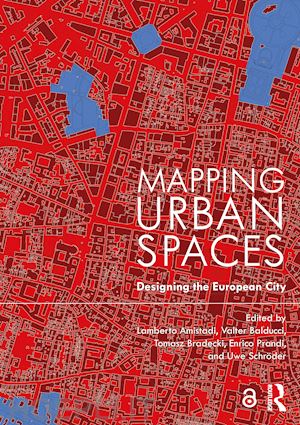Lamberto Amistadi is an architect and an associate professorin the Department of Architecture at the University of Bologna – Cesena Campus and the coordinator of the ArchéA program. He is the deputy director of the scientific journal FAMagazine, devoted to research and projects concerning architecture and the city, and co-director of the series TECA, Teorie della Composizione architettonica (Naples: Clean). Along with Ildebrando Clemente, he founded and directs the series SOUNDINGS: Theory and Architectural Openness (Florence: Aión), which has included monographic volumes on John Hejduk and Aldo Rossi. He is also the author of numerous publications. Valter Balducci is an architect, has a PhD in architecture (IUAV, 1994), and is a professor at the École Nationale Supérieure d’Architecture of Normandie, Rouen-Darnétal. He has been a teacherin the Faculty of Architectureat the Genua University (1990–2000), and a researcher and assistant professorat the Bologna University (2001–2014). Since 2014, he is a full professor in urban design at ENSA Normandie. His major research interests are focused on urban analysis and history. Since 2003, he has been conducting research on seaside tourism and projects on public space within seaside territories in relation to climate change. Tomasz Bradecki, PhD, is an architect, a researcher, and a lecturer of architecture and urban designin the Department of Urban and Spatial Planning, Faculty of Architecture, Silesian University of Technology since 2010. His main fields of interest include housing, urban design, and mapping with models. Besides research and teaching activity, he has been running an architectural firm since 2008. He is a member of the Polish Chamber of Architects. He is an author and co-author of many publications focusing on housing, commercial, and urban projects. Enrico Prandi is an architect and an associate professor at the Department of Engineering and Architecture of the University of Parma and the coordinator of the Parma group of the ArchéA program. He is the director of the scientific open access e-journal FAMagazine. He has been contributing to various research projects concerning architecture and the city and is co-director of the series AAC – Arts | Architecture | City (Turin: Accademia University Press). Since 2016, he has been the coordinator of the research project conducted by architect Luigi Vietti at the CSAC – Study Center and Communication Archive. He is also the author of numerous publications. Uwe Schröder is an architect and a professor at the RWTH Aachen University. In 1993, he founded his architectural office in Bonn, and since then he has devoted himself to thetheory and practice of architecture. Between 2004 and 2008, he was an ordinary professor of architectural theory and design at the TH Köln, and since 2008 he has been a professorin the Department of Spatial Designin the Faculty of Architecture at RWTH Aachen University. Besides his research and teaching activity in Germany, he taught as a visiting professor at various Italian universities, including Bologna, Naples, Bari, Catania, Milan, and Parma.











